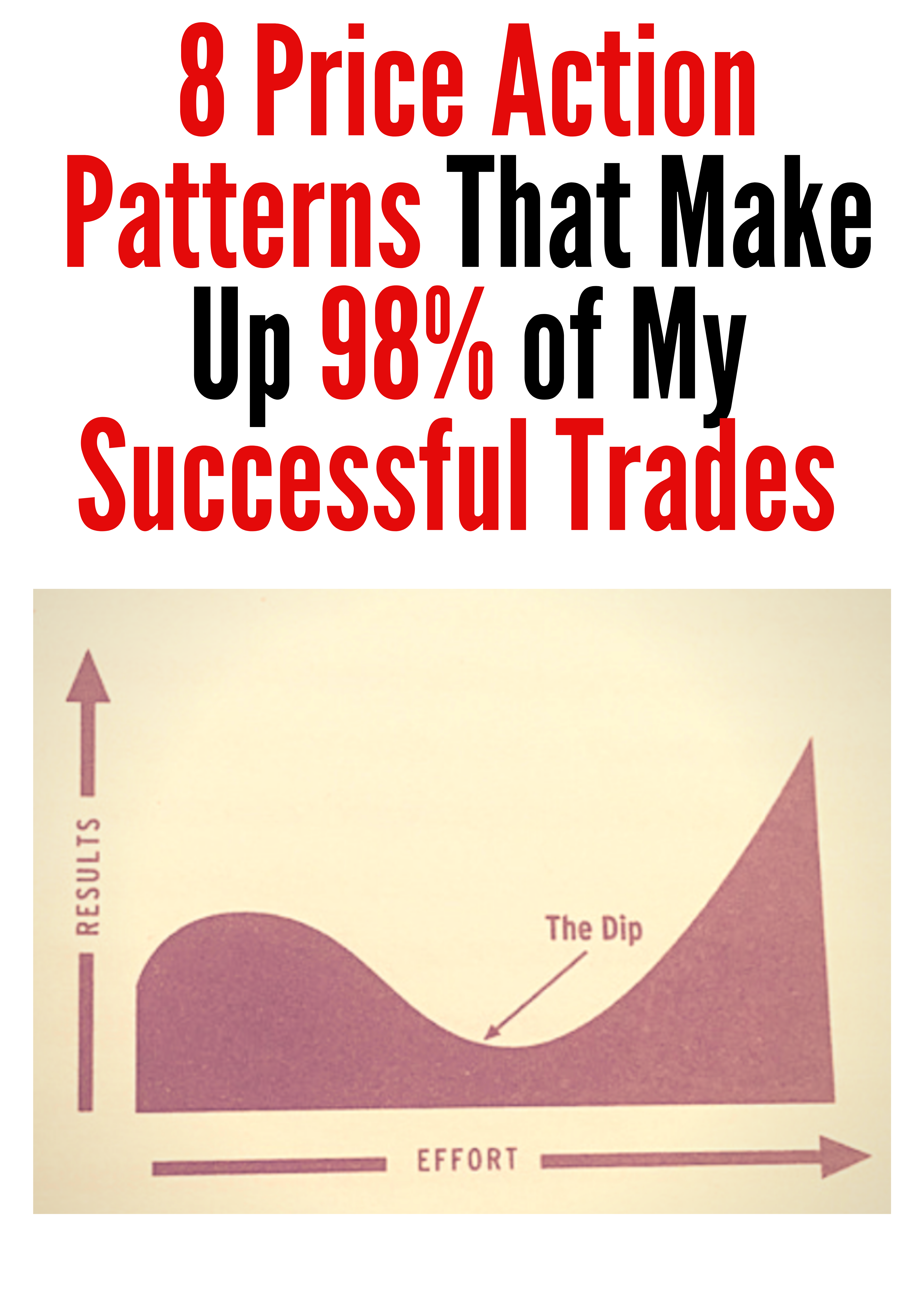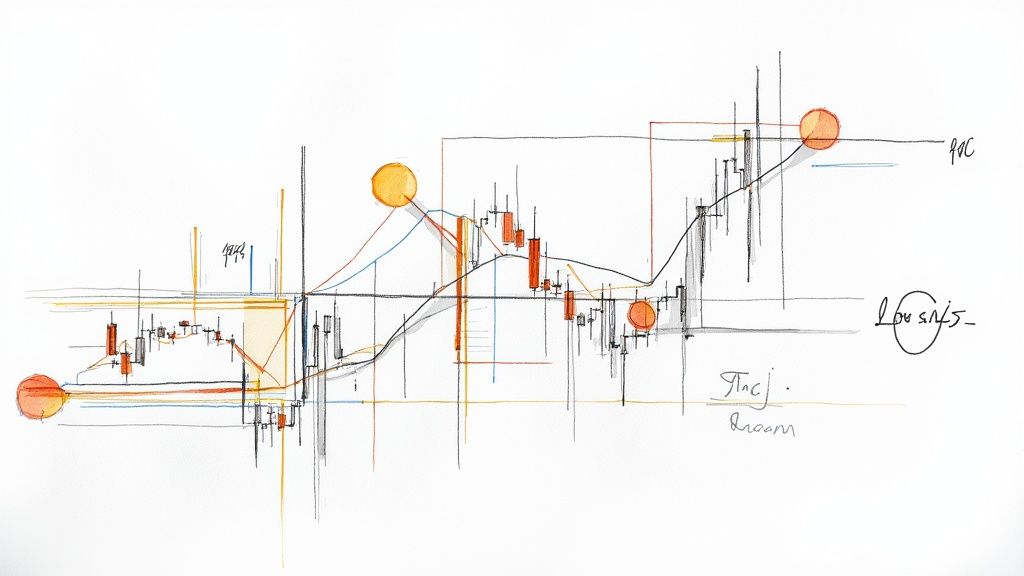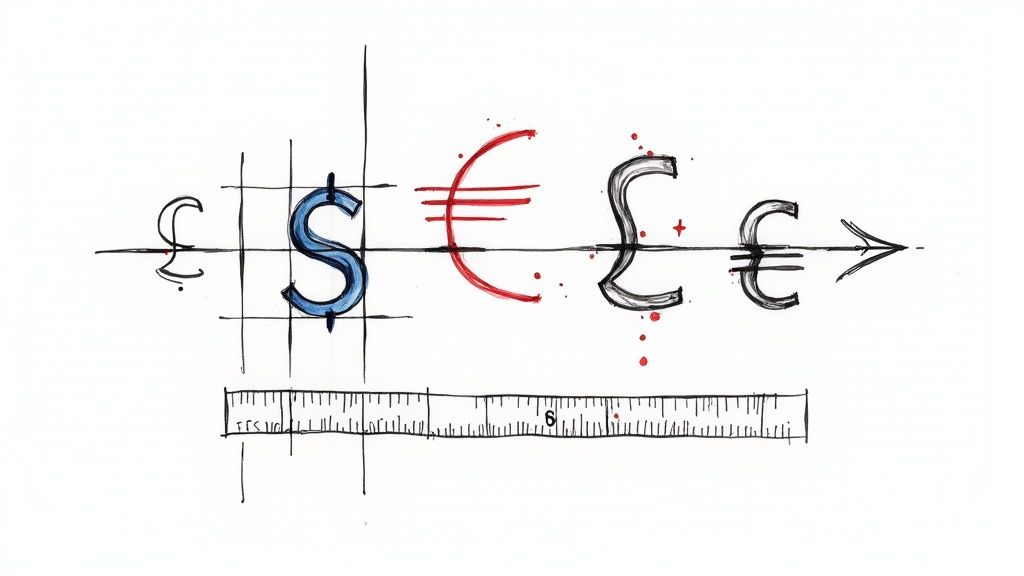Calculating Forex Lot Size: Smart Position Sizing Strategies for 2024
Getting Started with Forex Position Sizing
Knowing how to calculate your forex lot size is essential for trading success. When you place a trade, you need to determine exactly how many units of a currency pair to buy or sell. While this may seem like basic math, getting your position size right directly impacts how well you manage risk and protect your trading account. Learning proper position sizing helps you stay in the game for the long run.
Understanding Forex Lot Sizes
Let's break down the basic units used in forex trading – lots. These are standard amounts of currency that traders work with:
- Standard Lot: This equals 100,000 units of the base currency. For instance, one standard lot of EUR/USD means trading 100,000 Euros. Due to the large size, standard lots are mainly used by banks, funds, and traders with bigger accounts.
- Mini Lot: At 10,000 units, a mini lot is one-tenth of a standard lot. This smaller size works better for retail traders with moderate-sized accounts.
- Micro Lot: The smallest unit at 1,000 units of base currency (1/100 of a standard lot). Micro lots are perfect for new traders and testing strategies with minimal capital at risk.
Your choice of lot size should match your account balance, comfort with risk, and trading approach. For example, if you're just starting out with a small account, stick to micro lots while you learn. More experienced traders with larger accounts can consider mini or standard lots once they've proven their strategy works.
Calculating Your Position Size
To find the right position size, start by deciding how much you're willing to risk per trade. Most successful traders limit risk to 1-2% of their account on any single trade. This helps you survive losing streaks that every trader faces. With a $10,000 account using the 1% rule, you'd risk no more than $100 per trade.
Your stop-loss order is key here too. This pre-set exit point caps your potential loss if the trade moves against you. The distance in pips between your entry and stop-loss tells you your pip risk for sizing the position.
Finally, calculate what each pip is worth based on your chosen currency pair and lot size. Colibri Trader offers practical tools to help with these calculations. Their platform lets you focus on reading price action and supply/demand patterns instead of getting stuck on math. Taking their trading style quiz can also help you develop position sizing rules that fit your personal approach.
By mastering these position sizing basics and making them part of your trading routine, you'll be better equipped to protect your capital while pursuing consistent returns in the forex market.
Mastering the Mathematics of Lot Sizing
Learning to calculate forex lot size is essential for sound risk management and effective trading. When you understand how to determine position sizes based on your account balance and risk preferences, you can trade with greater confidence knowing your potential losses are controlled.
Understanding Pip Value and Risk Calculation
To calculate lot size properly, you first need to grasp how pip values work. A pip represents the smallest price movement in a currency pair – for example, when EUR/USD moves from 1.0730 to 1.0731, that's one pip. The monetary value of each pip depends on your lot size and the specific currency pair. For pairs with USD as the quote currency (like EUR/USD), the pip values are:
- Micro lot (1,000 units): $0.10 per pip
- Mini lot (10,000 units): $1.00 per pip
- Standard lot (100,000 units): $10.00 per pip
For other currency pairs, you'll need to account for the current USD exchange rate to determine pip values.
When it comes to risk per trade, most experienced traders suggest limiting exposure to 1-2% of your account. For instance, with a $5,000 account, keeping risk to 1% means not risking more than $50 on any single trade. This risk amount helps determine your ideal lot size.
Putting it All Together: Calculating Your Lot Size
To find the right lot size, you'll combine your pip value knowledge with your risk tolerance. The key is setting a stop-loss order – the price level where you'll exit if the trade moves against you. The distance in pips between your entry and stop-loss is your "pip risk."
Here's a real example: You want to trade EUR/USD with a $5,000 account, risking 1% ($50), with a 20-pip stop-loss. Since a mini lot of EUR/USD has a $1 pip value, here's the calculation:
- Lots = (Risk Amount / (Pip Risk * Pip Value))
- Lots = ($50 / (20 pips * $1/pip))
- Lots = 2.5 mini lots
This means trading 25,000 units (2.5 mini lots) keeps your risk at $50 even if your stop-loss gets hit. For more help with these calculations, check out Colibri Trader for useful tools and resources.
Refining Your Calculations with Different Account Currencies
The math gets slightly trickier when your account currency differs from the pair you're trading. For example, if your account is in GBP but you're trading EUR/JPY, you need to convert pip values using the current GBP/JPY rate. Fortunately, most modern trading platforms handle these conversions automatically. Colibri Trader's educational materials can help you master these concepts while developing your price action analysis and risk management skills.
Risk Management That Actually Works
Proper forex lot size calculation is essential for protecting your trading account. Smart position sizing helps successful traders grow their capital steadily while limiting losses during market swings. Let's explore how choosing the right position size can make or break your long-term trading success.
The 1% and 2% Rules: Your Trading Guardrails
Most experienced traders follow the 1% or 2% rule – never risking more than that percentage of their account on a single trade. For instance, if you have a $5,000 account and use the 1% rule, you would risk no more than $50 per trade. This approach shields you from strings of losses that could seriously hurt your account. But these guidelines aren't set in stone.
Knowing When to Bend the Rules (and When Not To)
While the 1-2% rules provide solid protection, blindly following them isn't always best. A trader who spots an exceptional setup based on careful analysis might choose to risk 2.5% or 3%, while keeping overall risk in check. On the flip side, when markets get extra choppy, cutting risk to 0.5% or 0.25% helps preserve capital.
The key is matching your risk to current market conditions and personal comfort level. Sticking firmly to the rules during uncertain times protects your account, while thoughtfully going beyond them lets you capitalize on strong opportunities. Resources from Colibri Trader can help build your risk management skills. Their focus on price action and supply/demand analysis provides practical tools for making smart trading decisions.
How Professionals Adapt to Changing Markets
Skilled traders regularly adjust their position sizes based on several key factors:
- Market Volatility: They reduce position size in choppy markets to limit potential losses, but may increase size when markets are calmer
- Trading Strategy: Quick-moving scalpers often use larger positions compared to swing traders who hold longer-term positions
- Confidence Level: Strong analysis and conviction in a trade setup might justify slightly larger position size
This table shows how different factors affect lot size decisions:
| Factor | Influence on Lot Size |
|---|---|
| High Volatility | Decrease |
| Low Volatility | Increase |
| Scalping | Larger (relative) |
| Swing Trading | Smaller (relative) |
| High Confidence | Slight Increase |
| Low Confidence | Decrease |
Taking this flexible approach to forex lot sizing helps traders handle changing market conditions. Combining the core 1-2% rules with careful analysis of market dynamics and personal risk tolerance creates a solid risk management plan. Success comes from both understanding position sizing math and developing the discipline to apply it consistently as markets shift.
Strategic Position Sizing for Different Trading Styles
A trader's lot size calculations must align with their trading style. Someone making quick scalping trades needs a very different approach than a swing trader holding positions for days. The way you size your trades has a direct impact on your risk management and potential returns. Let's explore how different trading styles require unique position sizing strategies.
Scalping: Quick Trades Need Careful Sizing
Scalpers often use larger positions compared to other traders since they target small price movements. When you're aiming for just 5 pips of profit on EUR/USD, you need more units to make worthwhile returns compared to targeting larger moves. However, this approach requires excellent discipline with stop losses and a solid grasp of short-term price movements. Scalpers must also factor in trading costs, since frequent trades can quickly eat into profits through spreads and fees.
Day Trading: Finding the Sweet Spot
Day traders close all positions before market close, requiring a balanced approach to position sizing. Many start with risking 1-2% per trade but adjust based on market conditions. For example, during major news releases or high volatility periods, a day trader might reduce their position size. When they spot an especially promising setup with clear support and resistance levels, they might increase size slightly. Colibri Trader offers detailed guidance on reading price action and managing risk for day trading strategies.
Swing Trading: Smaller Sizes for Bigger Moves
Since swing traders hold positions across multiple days or weeks, they typically use smaller lot sizes than shorter-term traders. This approach lets them withstand normal market fluctuations while targeting larger price swings. A swing trader might risk just 0.5% per trade but aim for moves that could return several times that amount. Their longer timeframe means they need enough margin to handle deeper short-term drawdowns without getting stopped out of good positions.
Adjusting to Market Behavior
No matter your trading style, you need to adjust position sizes based on what the market is doing. When volatility spikes, smaller positions help protect your account. During calmer periods, you might safely increase size somewhat. The resources at Colibri Trader can help you learn to read market conditions through price action and supply/demand analysis. This knowledge helps you make smart decisions about position sizing in different market environments. With practice and discipline in managing your trade sizes, you can work toward steady gains while keeping risks in check.
Advanced Position Sizing Techniques That Deliver Results
Building on basic lot size calculations in forex, successful traders use several proven techniques to control risk and maximize returns. These practical approaches help traders adapt their position sizes based on market conditions while protecting their capital.
Scaling Into Positions: A Controlled Approach to Entry
Many experienced traders prefer entering trades gradually rather than all at once. For example, when expecting a 100-pip move in EUR/USD, a trader might start with half their intended position. If the price moves 50 pips in their favor, confirming their analysis, they can add the second half. This method helps limit potential losses if the initial trade goes wrong while still capturing profitable moves when right. The gradual approach gives traders more flexibility to evaluate how the trade develops.
Managing Correlated Pairs: Diversification and Risk Mitigation
Some currency pairs move together – like EUR/USD and USD/CHF which often move in opposite directions. When trading multiple correlated pairs, calculating separate lot sizes for each without considering these relationships can lead to taking on too much risk. A trader needs to look at their total exposure across related pairs and adjust position sizes accordingly to maintain balanced risk levels.
Dynamic Position Sizing: Adapting to Market Volatility
Markets are always changing, and smart traders adjust their approach based on conditions. During volatile periods with big price swings, using smaller positions helps protect against sharp moves against your trade. In calmer markets, larger positions may make sense to profit from smaller price changes. The key is monitoring volatility levels and being ready to adjust position sizes as needed.
Adapting Institutional Strategies for Retail Accounts
While big banks and funds use complex position sizing models, retail traders can apply similar principles on a smaller scale. For instance, instead of using fixed stop-losses, traders can set stops based on current volatility levels – just like institutional traders do. Tools available through platforms like Colibri Trader help implement these proven risk management methods. When combined with Colibri's price action and supply/demand analysis, these sizing techniques give traders a practical way to manage risk while pursuing consistent returns. By following these tested approaches and sticking to clear trading rules, individual traders can better handle market challenges and improve their results over time.
Avoiding Costly Position Sizing Mistakes
Getting your position sizing right can mean the difference between success and failure in forex trading. While knowing how to calculate lot size is important, understanding common mistakes is just as crucial. Let's look at where traders typically go wrong with position sizing and what you can do to protect your account.
Emotional Decision-Making: The Silent Killer of Trading Accounts
When emotions take over, position sizing often goes out the window. A classic example is when traders get caught up in excitement during a winning streak. They might double or triple their normal position size, convinced their hot streak will continue – until that one big loss wipes out weeks of gains. Similarly, after taking losses, fear can cause traders to reduce position sizes so much that even good trades barely impact their bottom line.
Case Study: When FOMO Leads to Disaster
The dangers of emotional trading became painfully clear during the 2010 "flash crash." As prices plummeted, many traders jumped in with oversized positions, afraid of missing a potential rebound. When the market continued falling sharply, those who ignored their normal risk limits suffered massive losses. This real example shows why sticking to your trading plan is critical, especially in volatile conditions.
Strategies for Staying Disciplined
To keep emotions from derailing your trading, start with a clear plan that spells out your risk parameters. Decide upfront how much you'll risk per trade – many successful traders limit this to 1-2% of their account. Set firm stop-loss levels and stick to them. Keeping a detailed trading journal also helps identify when emotions are affecting your decisions before they cause major damage.
Troubleshooting Common Position Sizing Challenges
Even with good intentions, traders face specific hurdles in sizing positions correctly. A frequent issue is miscalculating pip values when trading pairs that don't use your account currency. Another trap is not accounting for correlations between related currency pairs, which can multiply your actual risk exposure. Colibri Trader provides resources to help traders understand these technical aspects and build sound risk management practices.
Warning Signs: Are You Off Track?
Watch for red flags that your position sizing needs attention: frequent margin calls, big swings in your account balance, or holding losing trades too long hoping they'll recover. If you notice these patterns, it's time to review your approach. Colibri Trader's focus on price action and supply/demand analysis, along with its trading style assessment, can help you develop position sizing rules that fit your personal risk tolerance and goals.
Ready to refine your position sizing and build a more consistent trading approach? Colibri Trader offers practical guidance tailored to your trading style. Learn more about protecting and growing your account with proven risk management strategies. Visit Colibri Trader now









